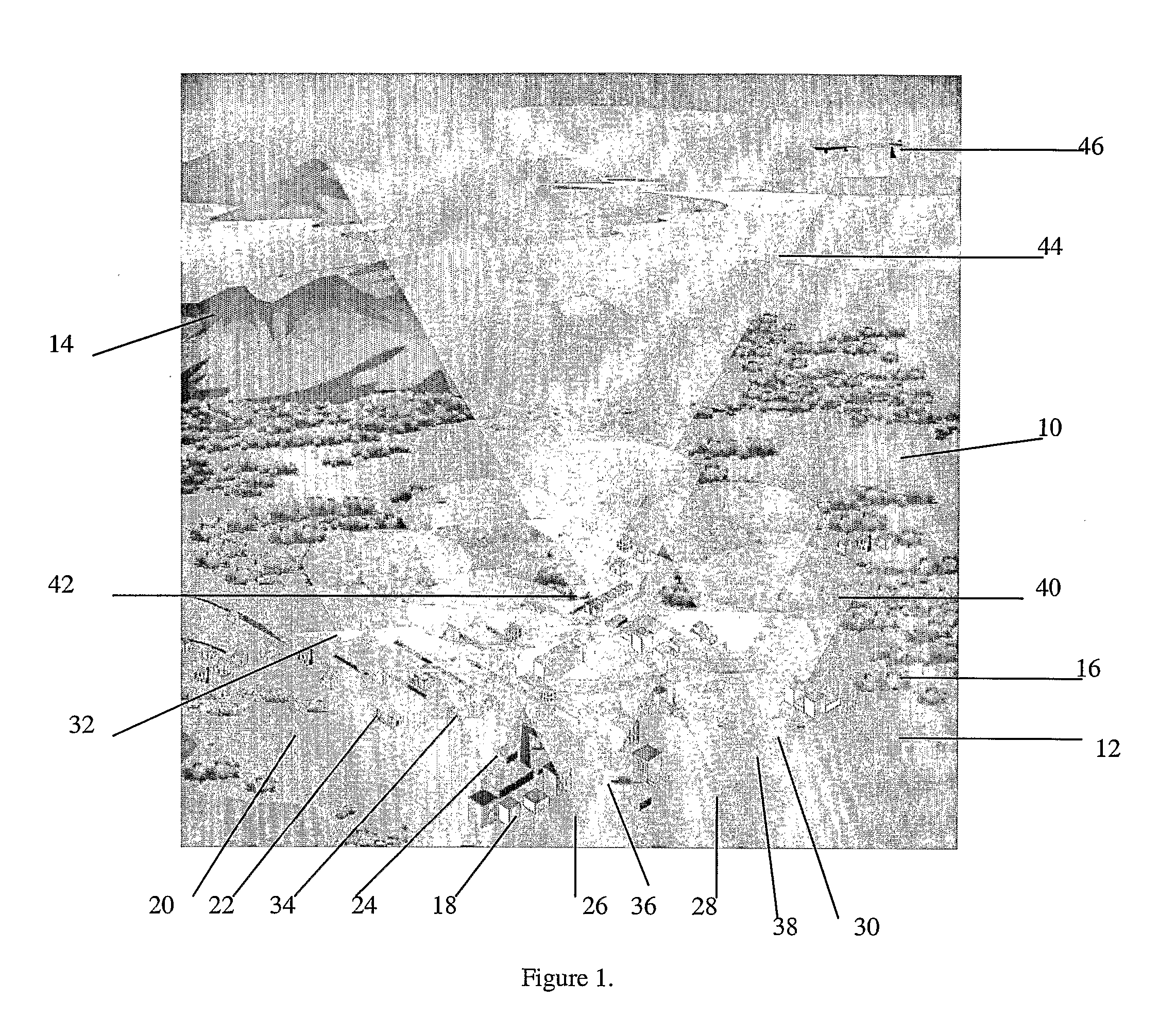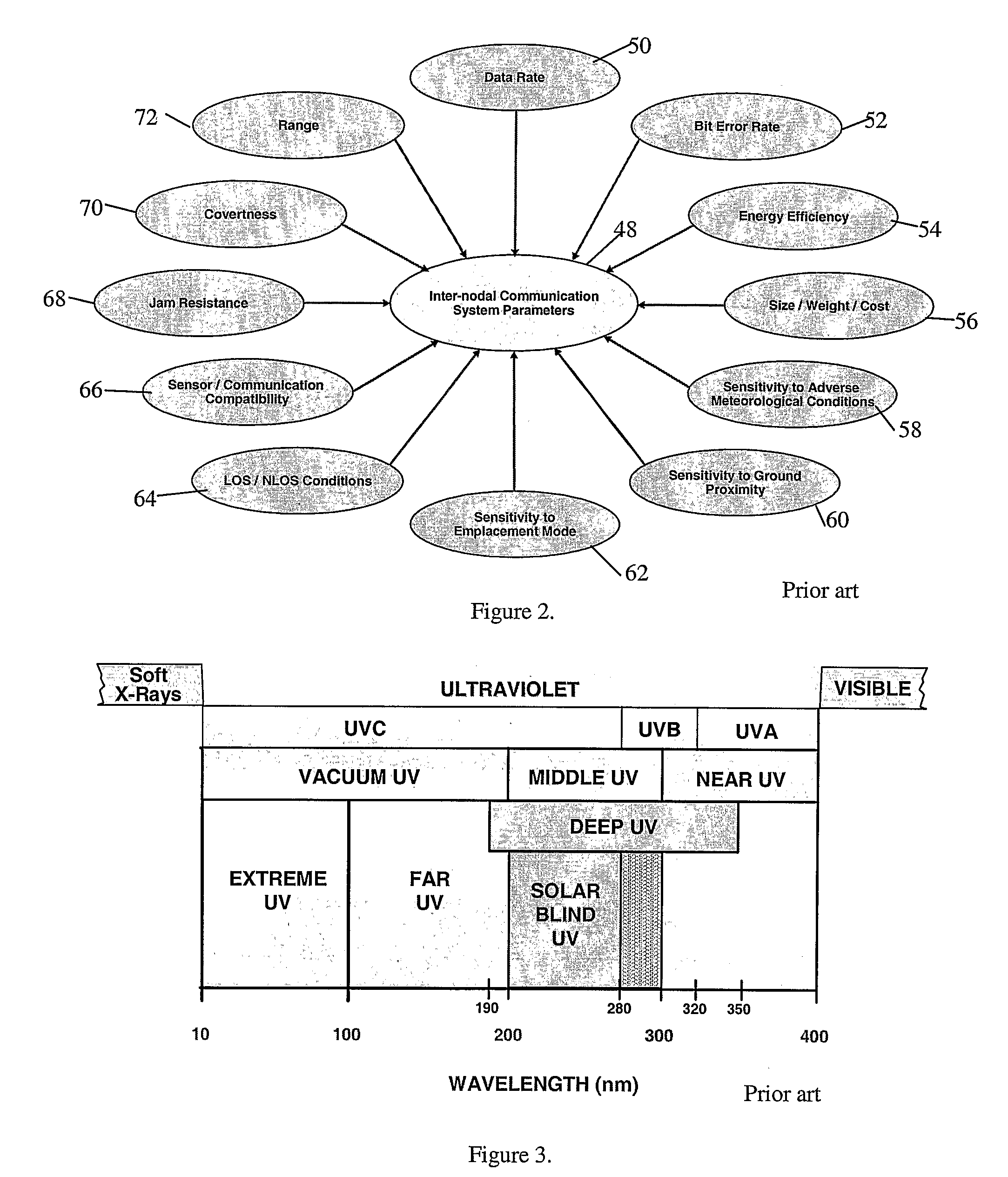Solar Blind Ultraviolet Communication System for Unattended Ground Sensor Network
- Summary
- Abstract
- Description
- Claims
- Application Information
AI Technical Summary
Benefits of technology
Problems solved by technology
Method used
Image
Examples
Embodiment Construction
1. Solar Blind Ultraviolet Communications
[0027] Communications is a key element of unattended sensor networks. Communication systems are required for inter-nodal communication and for transmission of information from a gateway to a higher level system. There are a number of communication system approaches under consideration for unattended ground sensors as is disclosed in Gary A. Shaw, et al.; “NLOS UV Communication for Distributed Sensor Systems”; Proc. SPIE Vol 4126 (2000), the contents of which are incorporated herein by reference. Each system offers advantages and disadvantages and must be considered with respect to specific network requirements. For those applications where non line-of-sight conditions do or may exist, covert operation is required, and insensitivity to transceiver orientation is important, a non line-of-sight solar blind ultraviolet communication network may represent an optimum solution. These communication systems may be located at fixed ground sites as sh...
PUM
 Login to View More
Login to View More Abstract
Description
Claims
Application Information
 Login to View More
Login to View More - R&D
- Intellectual Property
- Life Sciences
- Materials
- Tech Scout
- Unparalleled Data Quality
- Higher Quality Content
- 60% Fewer Hallucinations
Browse by: Latest US Patents, China's latest patents, Technical Efficacy Thesaurus, Application Domain, Technology Topic, Popular Technical Reports.
© 2025 PatSnap. All rights reserved.Legal|Privacy policy|Modern Slavery Act Transparency Statement|Sitemap|About US| Contact US: help@patsnap.com



